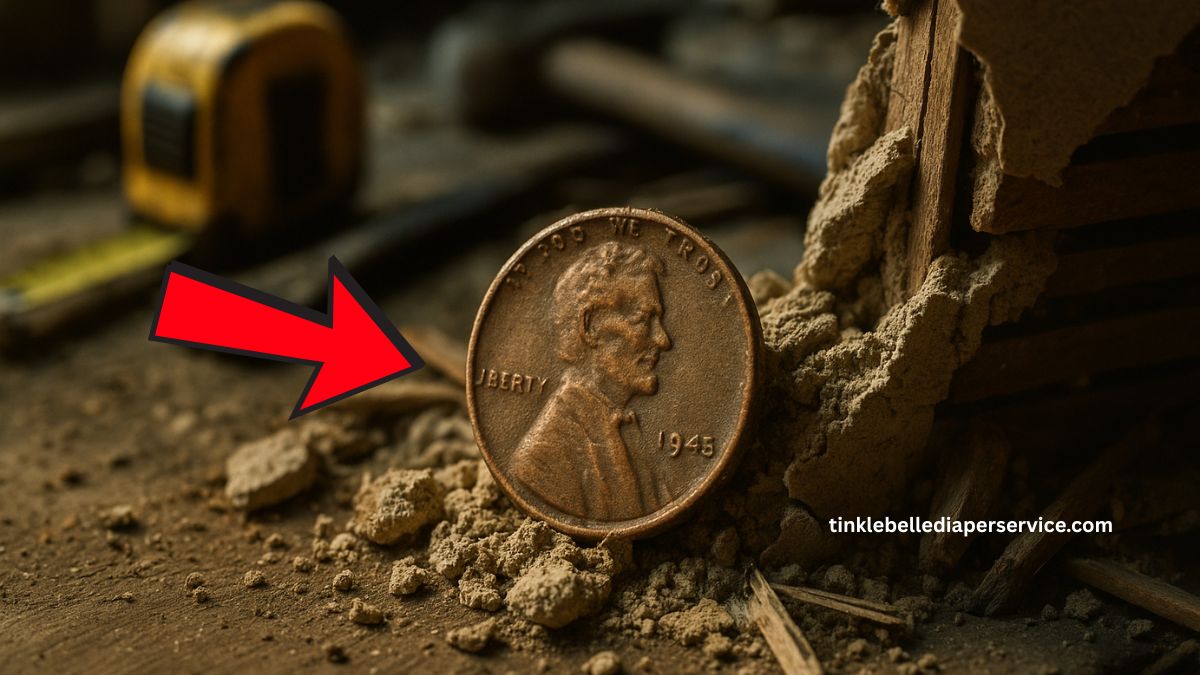A routine home renovation in Pennsylvania recently turned into an extraordinary discovery when a homeowner uncovered a rare 1943 copper Lincoln penny hidden within the walls of their 1940s-era house.
This unexpected find has captivated coin collectors and historians alike, as the 1943 copper lincoln penny is considered one of the most elusive and valuable coins in U.S. numismatic history.
The Historical Significance of the 1943 Copper Lincoln Penny
During World War II, the U.S. Mint faced a critical copper shortage due to the metal’s necessity in wartime production. To conserve copper, the Mint produced pennies using zinc-coated steel in 1943.
However, a small number of copper planchets—blanks intended for 1942 pennies—were mistakenly used in 1943, resulting in a limited run of copper pennies for that year. These rare coins are highly sought after by collectors.
Discovery During Renovation
The Pennsylvania homeowner stumbled upon a small tin box concealed within a wall cavity. Inside, they found a collection of old coins, including a 1943 lincoln penny that appeared to be made of copper rather than the expected steel.
Upon further examination and consultation with numismatic experts, the coin was authenticated as a genuine 1943 copper Lincoln penny—a discovery that halted the renovation and sparked significant interest in the coin-collecting community.
Valuation and Rarity
The 1943 copper Lincoln penny is exceedingly rare, with estimates suggesting that fewer than 20 authentic examples exist today. In 2010, a 1943-D copper penny sold for $1.7 million at auction, underscoring the coin’s immense value.
The recently discovered lincoln penny is currently undergoing professional grading to determine its condition and market value, but experts anticipate it could fetch a substantial sum at auction.
Comparison of 1943 Lincoln Penny Compositions
| Feature | 1943 Steel Penny | 1943 Copper Penny |
|---|---|---|
| Composition | Zinc-coated steel | 95% copper, 5% tin and zinc |
| Weight | 2.7 grams | 3.11 grams |
| Magnetic | Yes | No |
| Estimated Quantity | Over 1 billion | Fewer than 20 |
| Estimated Value Range | $0.10 – $10 | $100,000 – $1.7 million |
Authentication Process
To verify the authenticity of a 1943 copper penny, several steps are undertaken:
- Magnet Test: Genuine copper pennies are not magnetic, whereas steel pennies are.
- Weight Measurement: Copper pennies weigh approximately 3.11 grams, compared to 2.7 grams for steel pennies.
- Professional Grading: Submission to a reputable grading service, such as the Professional Coin Grading Service (PCGS) or Numismatic Guaranty Corporation (NGC), provides authentication and condition assessment.
Tips for Coin Collectors
- Avoid Cleaning: Cleaning a coin can diminish its value. It’s best to leave it in its original state.
- Proper Storage: Store coins in a cool, dry place using acid-free holders to prevent damage.
- Regular Appraisals: Have your coin collection appraised periodically to stay informed about current values.
The discovery of a 1943 copper Lincoln penny during a home renovation serves as a compelling reminder of the hidden treasures that may lie within our homes. This rare coin not only holds significant monetary value but also offers a tangible connection to a pivotal moment in history.
For collectors and enthusiasts, such finds fuel the passion for numismatics and the enduring allure of uncovering pieces of the past.
FAQs
How can I tell if my 1943 penny is made of copper?
Perform a magnet test; if the penny is not attracted to a magnet and weighs around 3.11 grams, it may be a copper penny. Consult a professional for verification.
Why were some 1943 pennies made of copper?
A few copper planchets from 1942 were accidentally left in the minting machines and used in 1943, resulting in the rare copper pennies.
What should I do if I think I have a rare penny?
Avoid cleaning the coin and consult a professional grading service or numismatic expert for authentication and appraisal.

